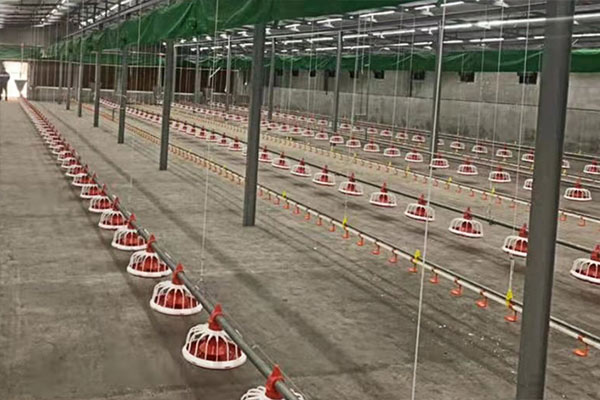
As a poultry farmer managing 5,000–30,000 hens, you know that every minute counts—and so does every egg. The key isn’t just automation; it’s smart automation. With the right H-type layer cage system, you can reduce labor costs by up to 40%, lower stress-induced drop-offs, and improve egg quality consistently.
Most farms still use fixed feed schedules—regardless of age or production stage. But studies show that adjusting feed volume and timing based on hen age (e.g., 20–40 weeks) increases feed conversion ratio (FCR) by 8–12%. For example:
| Age Group | Daily Feed (g/hen) | Feeding Frequency |
|---|---|---|
| 20–30 weeks | 105–115 g | 2x/day |
| 31–40 weeks | 120–130 g | 3x/day |
| 41+ weeks | 110–120 g | 2x/day |
This dynamic adjustment reduces waste, boosts egg output, and keeps your flock healthy—without extra hands on deck.
“We used to feed once at dawn. Now with automated scheduling, our eggs are cleaner, and we’ve cut broken eggs by 15%.”
—— Maria Lopez, 12,000-hen farm in Mexico
Collecting eggs too frequently leads to unnecessary handling. Too infrequently? You lose freshness and increase breakage. Research shows that collecting every 4 hours instead of 6 reduces internal damage by 18%—and improves customer satisfaction when selling directly to processors.
Our H-type cages integrate with smart collection belts that adjust speed based on flock size and time of day. At peak laying hours (10 AM–2 PM), the belt runs faster to prevent overloading and egg stacking—which is a major cause of cracks.

Fecal buildup in traditional systems raises ammonia levels—often above safe thresholds (>25 ppm). High ammonia causes respiratory issues, lowers eggshell strength, and increases mortality. With automatic manure removal every 2 hours, ammonia drops below 15 ppm, reducing disease risk by up to 30%.
And here’s the kicker: this also means fewer antibiotics needed—a win for both animal welfare and export compliance in EU and Middle East markets.
When combined with smart climate control (temperature, humidity, ventilation), these systems create an environment where hens stay calm, productive, and less prone to stress-related decline.
No two operations are the same. Whether you run a small 5,000-bird operation or a large-scale 30,000-bird facility, our modular H-type cages scale seamlessly. Smaller farms benefit from reduced labor (saving ~$150/week), while larger ones see ROI in under 12 months thanks to higher egg yield and better hygiene.
Want to know if your current setup is holding you back?
If yes—your next upgrade might be closer than you think.

